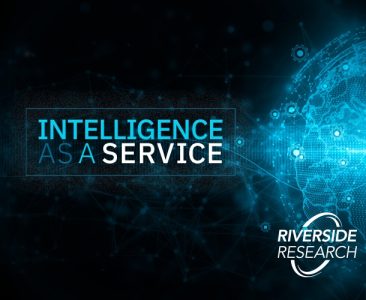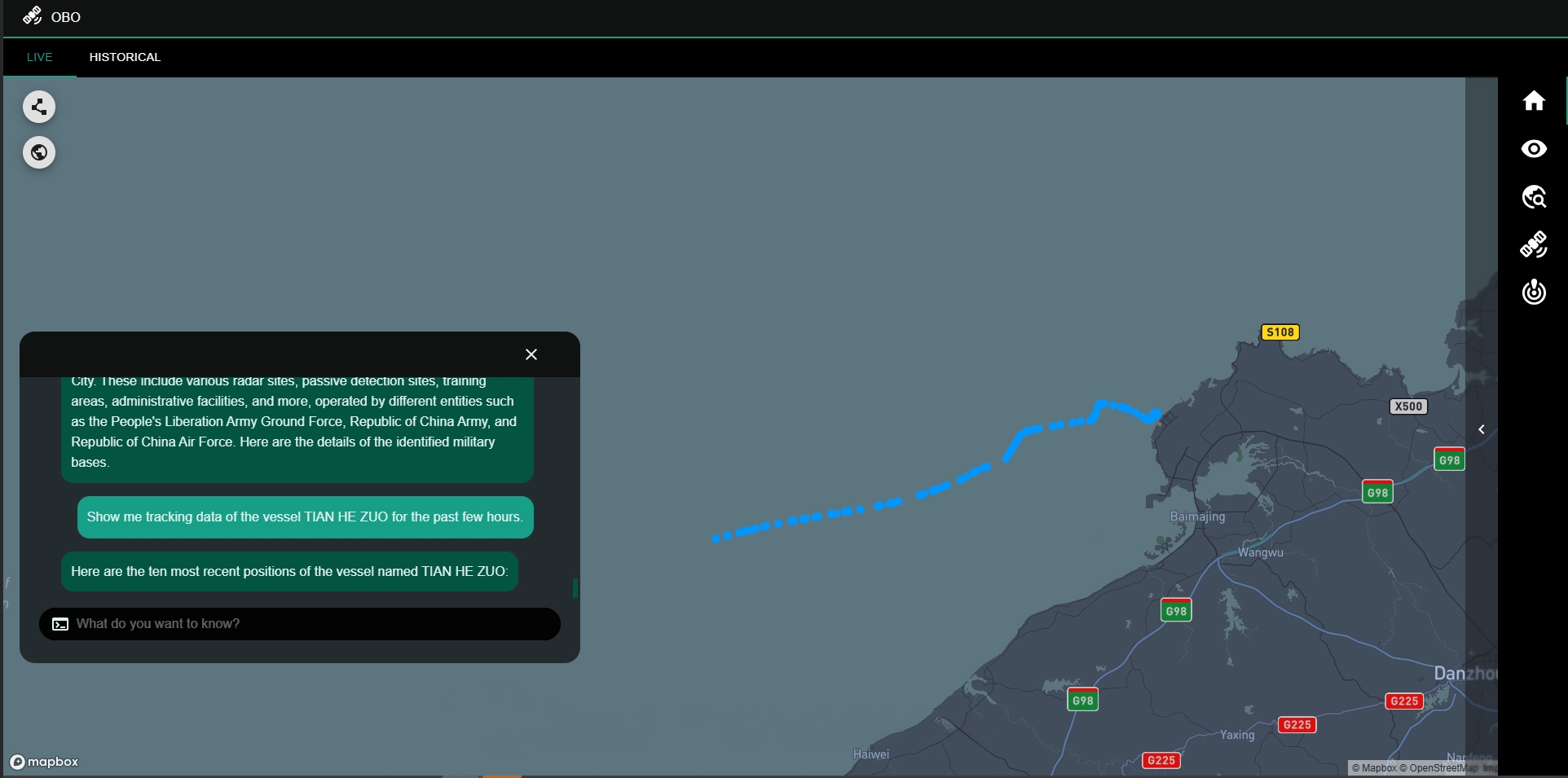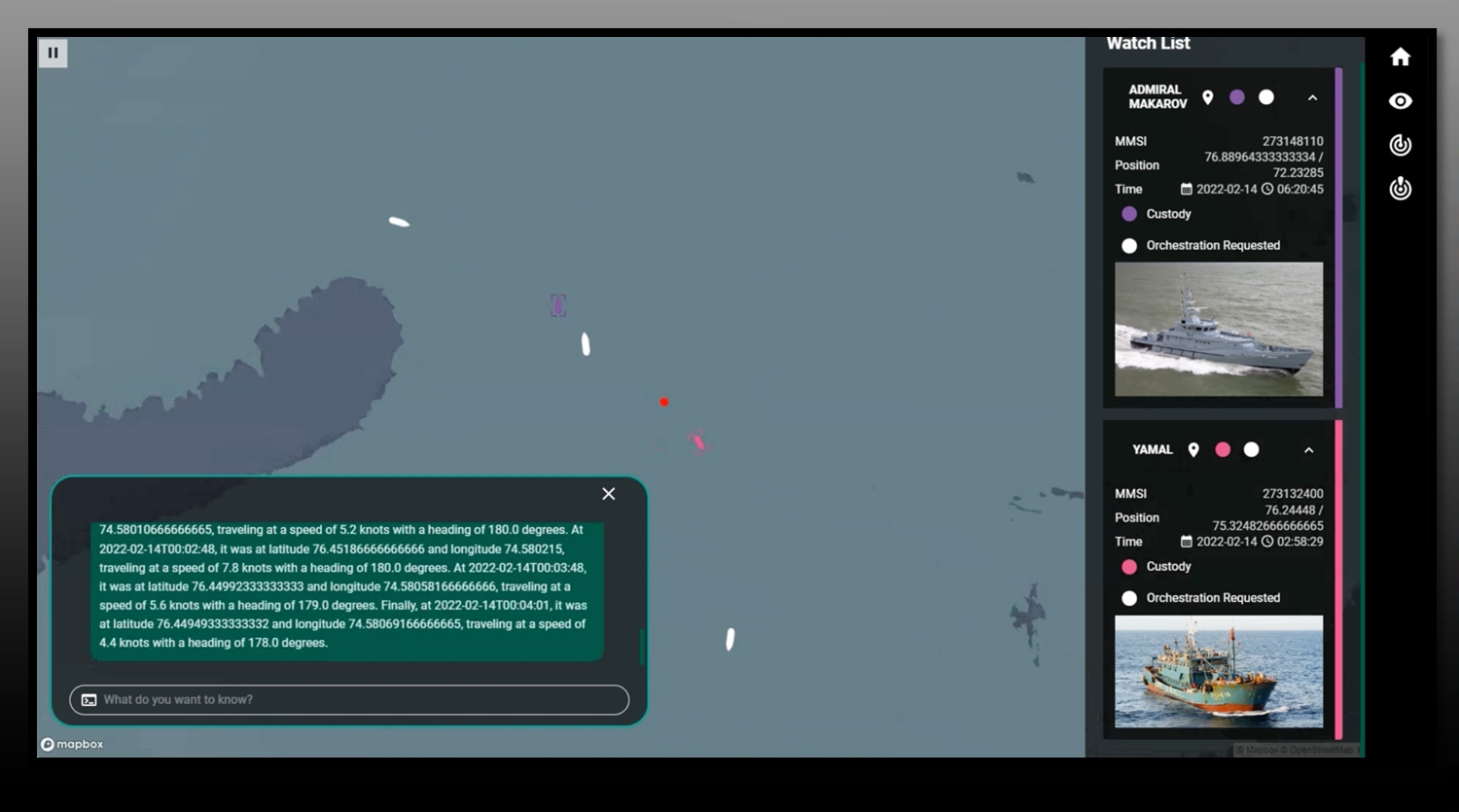Riverside Research Develops Intelligence as a Service via Automated Intelligence Solutions
In the past several years, intelligence analysts have done what they do best: use all available data to forecast and speculate about current and future events or activities. It’s no longer a question of whether parts of their work will be automated, but rather how rapidly and to what degree automation will enhance their capabilities.

Riverside Research has developed mission-focused software that empowers analysts, operators, and policymakers to make more informed decisions with greater speed and precision, drawing on a broader range of data sources. Designed to handle complex and shifting demands, these automated intelligence solutions deliver Intelligence as a Service (IaaS) that users can tailor to meet dynamic mission requirements.
This technology was developed as part of Riverside Research’s internal research and development (IRAD) portfolio to validate emerging technologies and introduce new capabilities in unclassified or commercial environments. The IaaS team specifically built this software to transition seamlessly into more secure, classified networks across multiple Department of Defense (DoD) and Intelligence Community (IC) enterprises, ultimately supporting critical national security objectives.
How Riverside Research’s Intelligence as a Service Works
The automation begins as a human user poses key intelligence questions to prompts through a simple conversational interface, and multiple artificial intelligence (AI) agents launch to break down the request, build workflows, search dispersed data sources, fuse relevant information, or even task for new collection.
Matthew May, who leads Riverside Research’s Cognitive Intelligence Solutions, explains that analysts often spend just 30 percent of their time on analysis and critical thinking; the remaining 70 percent goes to gathering data, formatting slides, or preparing dashboards. By leveraging various data feeds—from satellite imagery to social media and maritime tracking—these automated workflows flip that ratio, freeing analysts to focus on higher-level insights and decision-making.
“We want to flip those percentages so human intelligence analysts can spend the majority of their time using critical thinking skills, pouring over data, and making the critical insights only humans can infer,” May describes. “The AI is here to make that easier by providing, summarizing, and even correlating more data than a human could comb through in the same amount of time. Ultimately, though, decisions based on the data are still made by the human user.”

Through large language models (LLMs) and AI agent components, this solution can prompt deeper data inquiries. When an analyst needs to answer a broad question like “Where are there anomalies in maritime traffic near contested regions?” the system orchestrates queries across multiple application program interfaces (APIs), checking commercial, open-source, and secure-environment databases. By first proving these automated workflows with commercial data sources, Riverside Research ensures the same approach can be adapted for unique government data and sensors.
How Agencies and Analysts Can Apply This Intelligence as a Service Tool
The IaaS software can be tailored for specific missions and domains, drawing on a wide variety of data types. It features a flexible, user-friendly interface that requires no special training to operate and leverages LLM prompt engineering, enabling analysts to refine questions or specify additional details. AI agent components then connect to diverse data providers, delivering richer insights directly to the human end user.
If the human user desires further automation, the AI can fuse data sources and produce finished intelligence reports in seconds, drastically reducing manual tasks. Analysts can also trace each conclusion or data point back to its source, ensuring transparency and trust in the AI-driven outcomes.
By showcasing success with commercial providers Riverside Research demonstrates how quickly and reliably the solution can be extended to the more stringent demands of government networks and enterprise-scale deployments.

The Future of Intelligence with AI
“In the next three to five years, we envision an environment where both junior and senior analysts can easily interpret information, imagery, and signals across land, sea, air, space, and cyber domains—without needing to be specialists in every area,” May says. “Through multi-modal data fusion and predictive modeling, we gain a clearer view of which regions or events require closer monitoring, ultimately bolstering national and global security.”
In a “waterfall” effect, each AI agent controlled by the software can spawn its own specialized sub-agents, each focusing on a particular mission or sensor. This leads to greater situational awareness, additional targeted information for the analyst, and more comprehensive security for the warfighter. Analysts can predict events such as peaceful protests escalating into unrest or detect suspicious movements on shipping routes in near real-time—tasking additional sensors as needed.
As May notes, “The software doesn’t just answer the question: it provides intelligence. If you ask, ‘Where is Vessel USS Blackshark?’ it won’t just say, ‘Location A.’ It also looks for signs of spoofing or mismatched signals. ‘It claims to be at Location A, but multiple sources indicate it’s actually at Location B.’ That deeper context is critical for real decision-making.”
Automated Intelligence Analysis for the Maritime Domain
Because of its robust data inputs and the ability to spawn AI agents, Riverside Research’s IaaS solution is especially powerful in maritime monitoring. A global data feed tracks vessels and flags those broadcasting contradictory or suspicious information. Here, the AI fuses maritime Automatic Identification System (AIS) data, satellite imagery, radiofrequency signals, and even social media mentions to confirm a vessel’s actual whereabouts.
Rather than stopping at a single query, the solution highlights potential risks or irregularities. For example, discovering that a ship is spoofing its location provides insight into broader patterns of deception, allowing analysts to cue additional sensors or escalate concerns to the right channels. If custody of a critical vessel is lost, the system can automatically task commercial satellites to reacquire the target. Thanks to a microservices-based, modular architecture, these capabilities can be readily applied to other mission domains—land, air, space, or cyber—without substantial reconfiguration, enabling persistent awareness across virtually any object or environment.
The Future of Intelligence as a Service at Riverside Research
While maritime monitoring is a prime example of Riverside Research’s broader strategy, it merely scratches the surface of what automated intelligence workflows can accomplish. As more agencies adopt these capabilities, human analysts will spend far less time on routine data collection and report generation, and far more time on critical analysis testing hypotheses, uncovering patterns, and steering strategic decisions. This shift not only accelerates response times in critical situations in which a single piece of timely information can change an outcome but also scales seamlessly across different mission domains and classification levels.
By demonstrating success with commercial datasets and designing the architecture to integrate smoothly into government networks, Riverside Research’s IaaS model stands ready to meet the evolving demands of modern intelligence missions on land, at sea, in the air, in space, and beyond.
For more information on how Riverside Research can help transform your intelligence workflows, contact us.
